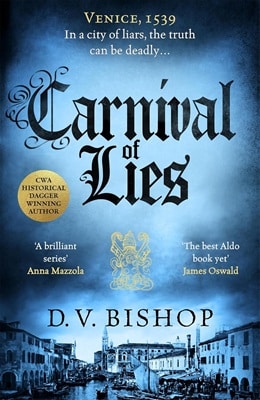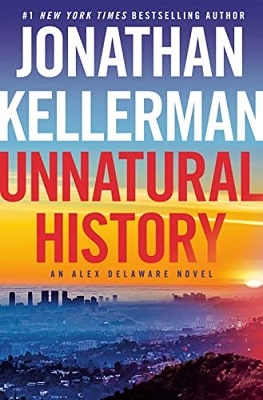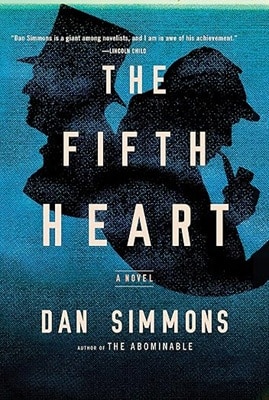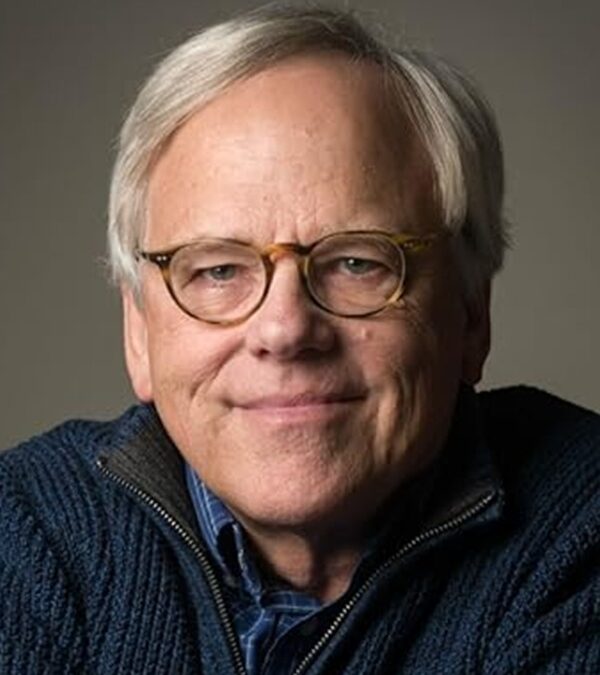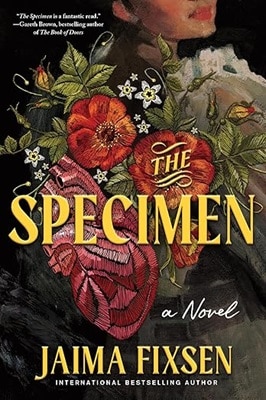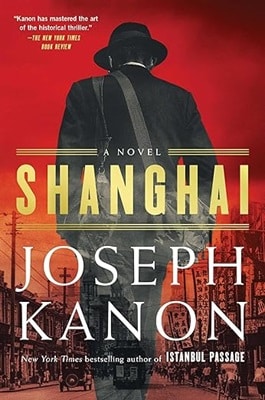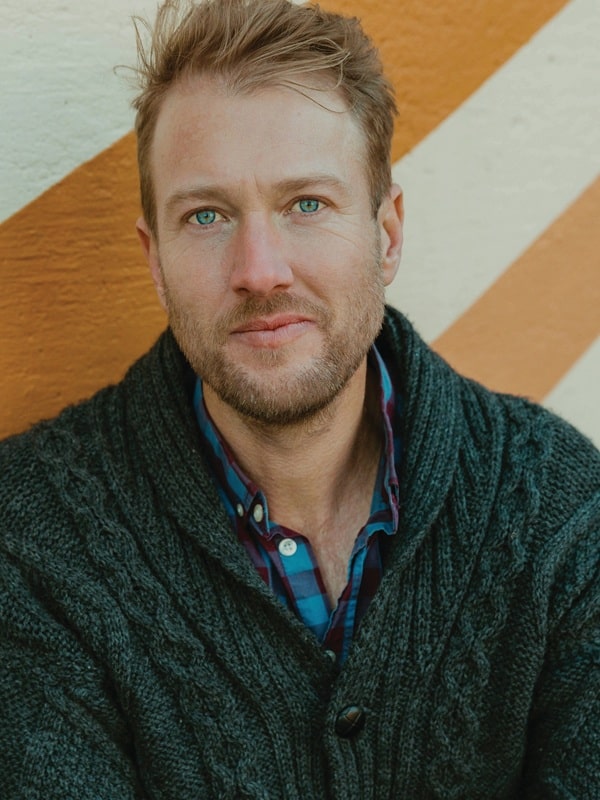
Author Peter Mann is lecturer of literature and history; a cartoonist with a newsletter on Substack, The Quixote Syndrome, where he creates historical stories in graphic form; and a gifted author. His debut novel, The Torqued Man, was named one of The New Yorker’s Best Books of 2022 and Crime Reads Best Historical Fiction of the year. His latest novel, World Pacific, follows in the historical fiction category. He currently resides in San Francisco and teaches at Stanford University.
Interview by Judith Erwin
Q: What inspired you to take the Richard Halliburton story from history to create World Pacific?
Peter: I find these little historical nuggets a kind of springboard for my imagination to fill in the gaps, or to alter the historical record. I was kind of idly researching San Francisco history and reading about the 1939 World’s Fair on Treasure Island. One of the things that caught my attention was an event they had scheduled, which was the celebrity travel adventure-writer named Richard Halliburton who was attempting to sail a Chinese junk from Hong Kong to San Francisco. It was supposed to coordinate his arrival with all the festivities of the fair in the spring of 1939. I thought this sounded like such a crazy idea. Then I read Halliburton had drowned. I sensed a kind of historical, fictional protagonist in this figure of Halliburton. So, I launched myself into reading about him and read his books from the twenties and thirties. There was something about his boyish, literary persona—his traveling to all these far-flung places, always making, kind of by design, a fool of himself by getting into tight spots and getting out. I sensed a real possibility. So, everything grew from that seed. I’ve drawn various other unrelated historical seeds and put them together, such as Hildegard Rauch. As I mentioned in the note in the back of the book, she was inspired by Thomas Mann and his family. I’ve lifted a lot directly from history but also altered things to my taste.
Q: Are you by chance related to the German writer Thomas Mann?
Peter: Not as far as the Mann family in Germany is willing to recognize. No, no relation that we know of. But I remember reading Thomas Mann, maybe in college. The Magic Mountain just blew me away. I wrote half of a dissertation in graduate school about Thomas Mann, so I just can’t seem to get away from the guy.
Q: Do you have books by Richard Halliburton in your personal library?
Peter: I do now. I certainly didn’t at the time. I had never heard of him. But he’s one of these figures who, I think, really loomed large. His first book came out around 1925, and it was a bestseller. Then he wrote a succession of books, one or more every year, for about a decade. His star burned brightly. But by 1939, when he came up with this crazy scheme, you could sense it was starting to become an act of desperation to stay in the limelight—to stay on top—maybe pushing him to ever greater, more desperate acts. This idea of gallivanting around and getting into boyish scrapes now seems kind of juvenile to people. But he was a huge bestselling author in his day. After his disappearance in 1939, for a few months people were interested, and then he vanishes from the news and from people’s memories. But I will say since reading Halliburton, while I don’t want to commit character assassination on the dead, I’m not a Halliburton fan as a reader, which made me feel fine about coming up with an entirely different persona loosely based on him and with a totally different prose style. I’ve taken everything and amped it up well beyond reason.
Q: You put Dickie Halifax through a lot.
Peter: I put him through a lot. Yeah. No disrespect to the actual Halliburton, who seems like an interesting, complex figure, but I think a fairly mediocre writer. I have met people since
whose parents or grandparents were huge Halliburton fans as children. My agent’s father was a Richard Halliburton fanatic and grew up reading his books. I’ll say that was one of the things that really opened up a possibility for me in terms of Halliburton’s voice and was one of the kind of structural keys to the book, I read that the real Richard Halliburton had raised funds for this trip in 1939 in part by selling subscriptions to his boy and girl readers. He had written a couple books specifically for children. For the price of five dollars, you could get letters written aboard his ship, the Sea Dragon. He would mail them at various ports of call en route. Of course, he never made most of those ports of call. But when I saw that, I was like I could have my Halliburton, Dickie Halifax, writing letters to boys and girls.
Q: Is there any evidence that Halliburton and the Manns knew one another?
Peter: I don’t have any evidence that they met. It’s possible. The real Richard Halliburton and the real Mann children were in Spain during the Spanish Civil War. So, it’s possible. There’s a couple of places they could have intersected, but to my knowledge, no.
Q: When you began putting your ideas together, did you make an outline? And did you know who all the characters were going to be?
Peter: When I had that idea drop into my head, I wrote maybe four pages of notes, just everything that had gone through my brain. I’ve learned from experience that if you say: “Oh, I’ll remember that. Certainly, I won’t forget something that monumental.” Three hours later it could be gone. So, I had the basic premise, and I had a sense I would have three central characters with three different voices. I didn’t quite know whether it would be alternating or how they would plug into each other. I’m not a plotter. I’m constantly making notes to myself and kind of speculating where things are headed. I have to try to write or at least think one to two steps ahead. I have a direction of what I’m aiming toward. But I can’t really do more than a couple of steps.
Q: How much research did World Pacific require?
Peter: I find that I’m doing research in different ways at every stage. When I first got this idea and thought this idea has legs for a novel and this is going to be my next project, I had maybe two dedicated months of just research. Having to identify what are the kind of key fields, I knew I had the World’s Fair. I needed to read a lot about that. I knew I had to dive deep into Halliburton and his own work. I knew that Thomas Mann’s children were stuff I had read a lot of from grad school and my own interests. That was stuff I knew I could come back to and reacquaint myself with. That was kind of in the vault. And then, I did a lot of concentric circles, historical context research of San Francisco of 1939-1940, the FBI, the history of American Intelligence, and the history of British Intelligence, which I had already researched a bit for my first book. That’s the preliminary research that gave me a sense of how I could start writing. And of course, there’s going to be so much I don’t know. What do I need in order to be able to tell that story, which is one of the great delights for me as a historian or a former historian who still teaches history? Of course, I love reading about history. I was never particularly good or interested in only researching one particular topic. I’ve always resisted specialization. One of the things I love about novel writing is I get to do scattershot, haphazard research into a hundred different things and then figure out how those all come together in some sort of coherent fashion. I just love that.
Q: When did you know that you wanted to be a novelist?
Peter: Oh, that’s a good question. If you ask my deep-down self, who couldn’t quite admit things to himself for a number of years, probably ever since I was a little kid. I always loved writing stories. Writing and drawing were my two favorite things. By the time I got to college I knew I was interested in writing but had suppressed it.
Q: Did you find with a transition from academic writing to fiction writing there was a learning curve?
Peter: Honestly, I felt like I was uncaged. It felt like a liberation. I felt I finally could do voices. I can be funny. I think one of the things that really drew me to fiction, and I hope will be a continuous thread in everything I write but certainly in The Torqued Man and World Pacific, is maybe at the end of the day, I think of myself as a comic novelist. I’m working in history. I want to create suspense. I want to create a sense of mystery. I want to write propulsive stories But at the end of the day I think what I want to do is entertain myself, and there has to be a strong element of humor in that.
Q: Is there anything that you want readers to learn from the book or are you just striving to entertain?
Peter: I couldn’t aspire to any higher ideal than to entertain. I don’t think entertainment has to always be mindless entertainment. There’s a kind of entertainment that involves kind of deep immersion into history, raises profound moral questions, and makes us question our identities, our values, and our allegiances. To me, that is far more entertaining than watching people run around shooting lasers. So yeah, I only aspire to entertain. But obviously, what I find entertaining is not going to be everyone’s cup of tea. We should all strive to entertain all parts of our brain and soul.
Q: Do you have a particular goal?
Peter: I want to keep writing novels. I imagine I’m going to always be writing in a somewhat historical vein. This next project I’m working on is going to reach a little further back in history but also probably reach further toward the present. The other thing, which is a specific writing goal. I’d like to work on a graphic novel because I also draw comics and cartoons. And I’m working on a graphic history. So, this one will be nonfiction. That’s definitely on my list of books I’d like to bring into the world, one that has a combination of image and text.
Q: I understand you draw comics on your Substack newsletter. Can you give a little description of that?
Peter: They’re all nonfiction, historically driven. I’ll read about interesting, strange anecdotes from history or literature, or literary biography, and then essentially make a one page, or sometimes a multi-part, telling the story. The last story I published on there is about the French philosopher, Simone Weil.
Q: With two novels out, what is next for Peter Mann, author?
Peter: I do have something. I don’t want to say too much about it, because it’s obviously in that kind of incubatory stage, but something historical, fictional, and comedic is taking shape.
Review by Judith Erwin
World Pacific is a brilliant combination of the author’s extensive knowledge of history, his sharp imagination, keen sense of humor, and skillful writing. Dipping back in time to the year Nazi Germany invaded Poland, Mann has taken fascinating people from history, altered names, adjusted known facts to his taste, and introduced a cast of characters readers will not forget who engage in some astounding activity. To finish off his cast, Mann inserted one primary actor from his imagination and a secondary character straight from Hitler’s inner circle.
Among the historical figures the story is based upon is Richard Halliburton, best-selling author of the era, who embarked on a mission to sail from Hong Kong to San Franciso on a Chinese junk in 1939. His purpose was to participate in the World’s Fair on Treasure Island. He failed to arrive. Halliburton was never to be seen or heard again and presumed drowned at sea.
Sharing a primary role in the book is a character based upon Erika Mann, a German actress and writer, who was the daughter of the revered German writer, Thomas Mann. For a bit of spice, history’s famous stripper Sally Rand is also included, albeit with a slightly altered name. With his illustrious cast, Mann weaves a story brimming with adventure, survival, reinvention, mystery, intrigue, humor, and surprise. Be prepared to seek your favorite resource for history after reading World Pacific.

